Understanding and managing tags in Evercate
Tags in Evercate may seem a bit abstract before you get to know them properly. But they are some of the most powerful tools in Evercate and will probably be your best friend in the future. In fact, tags are the key to automation in Evercate.
Tags let you:
- Automate course access
- Automate access to courseware
- Segment users in reports
- Delimit a Teamleaders team
- Get a better snapshot of your users
With that said, let's get started with this guide and go through how to set up a tag structure, how to create tags and how to assign tags to users.
Create a tag structure
Most organisations are similar in the broader sense and most organisations are quite unique once you look at them closely. This is where your tag structure comes in.
Tags allow you to describe your users in a way that makes sense to you.
For this example, we are working with a fictitious organisation, Propeller Inc. They have employees spread across five countries. Most of the employees work in sales, while others are technicians or work in admin and similar functions.
Based on that, we take a closer look at how tags in Evercate work. There are three basic rules about tags.
- A tag must belong to a tag type - for example, you can have the tag "Seller" in the type "Roll".
- A tag must be unique within a tag type - you can't have two tags named "Seller" within the same type.
- Tag types must be unique - you can't have two tag types called "Roll".
Beyond that, you are free to work with any tags you need. You can create as many types as you want, and as many tags as you want, and you name them whatever makes sense to you.
With that as a background, we can start creating a tag structure. For this example, we want to differentiate employees by country and role. But of course you can work with more types and tags than that for your organization.
Tag types
- Country
- Roll
Tags of type Land
- Sweden
- Japan
- Australia
- Nigeria
- USA
Tags of type Roll
- Sales
- Technician
- Administration
Now it's starting to look like a structure that makes sense and that we can work with further in this guide.
Remember that you generally only want to create tags that help a specific action in Evercate. Like assigning courses or segmenting users in reports. Too many tags and types tend to complicate things, so it's better to build along the way.
Create tags
So now that the structure is in place, we can create tags in Evercate.
First, I click on "User" in the main menu to go to my user's page. Here I see the users I have created and this is also where I can manage my tags. I do this by clicking on the "Manage Tags" button above my user list.

Then I get a popup where I can manage my current tags (there are currently no tags, so this list is empty for me) and create new ones. There are two ways to create tags. Either we click on "Add new" to add tags one by one, or we import tags as I will do in this wizard. If you want to add them one by one, it works very similarly. The difference is that you can only add one tag at a time instead of many. But since I want to create many tags at the same time, I click on "Import tags".
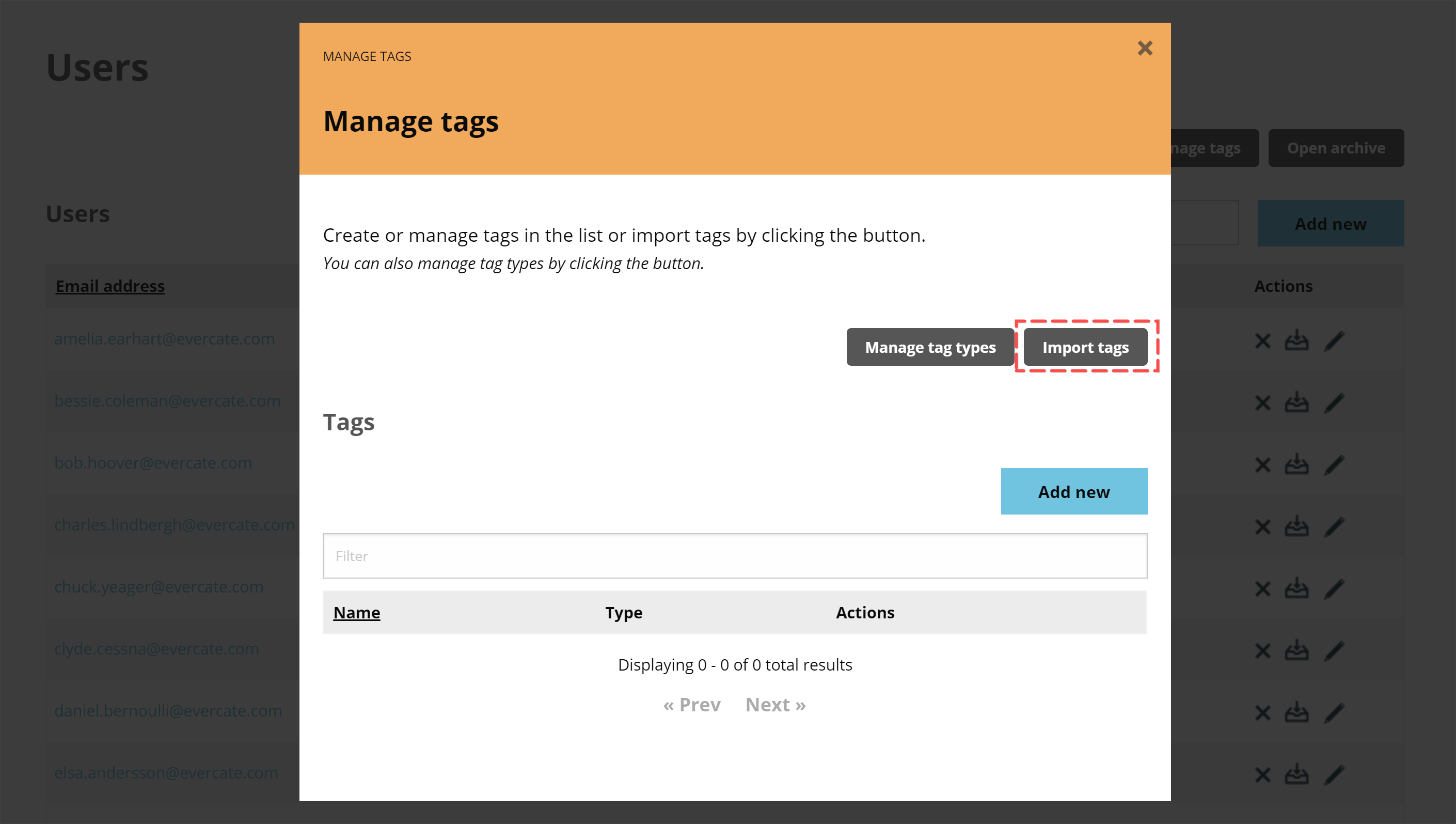
Here you simply type or copy your tags so that there is one tag per line. When you create tags, you must assign them a tag type. You can see the "Type" field in the image below. If we had already created tag types, we could select them here. But for me, I only have the choice to name my new tag type which in this case is "Country".
Remember that we can only import tags that are of the same type in the same import job, so we need to repeat this step to import our tags for the "Role" tag type. Once we have inserted our tags selected tag type we click on "Import".
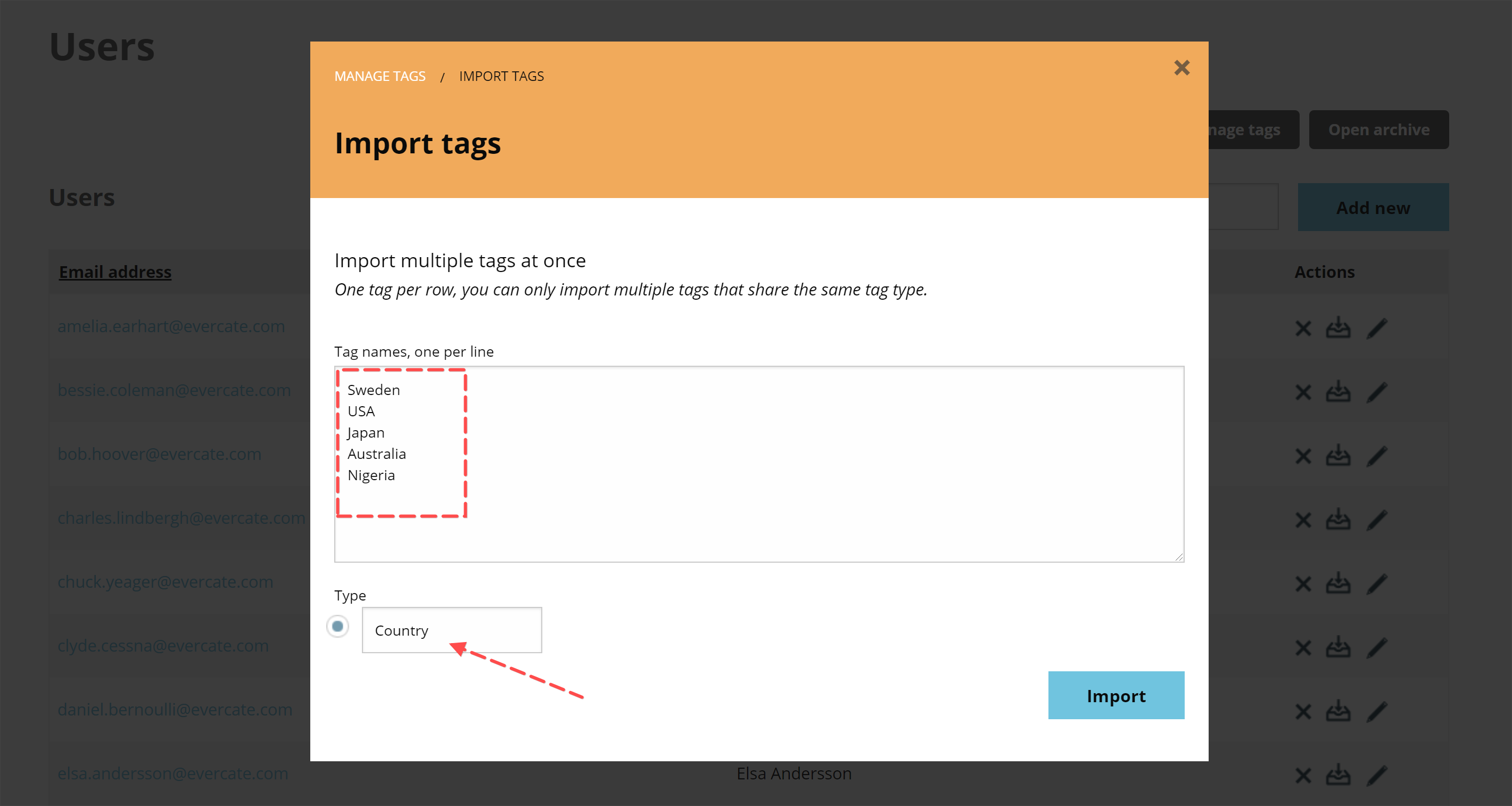
When I created my landing tags, I then went ahead and repeated the last step for my "Roll" tags as well. This gave me a list of tags like the image below. And with that, we're ready to start assigning tags to my users.

Once we have created our tags according to the tag structure we defined earlier, we can start giving tags to our users. Again, there are different ways to go about this depending on your needs and situation. We will cover how to assign tags to individual users, as well as how to assign tags to users in bulk.
Assign tag to individual users
Let's start by assigning tags to an individual user. This works the same way when editing an existing user as I'm going to do, as when creating a new user.
First of all, I make sure I'm on the "Users" page again. Then I click on the pencil icon to edit Amelia Earheart in my user list.

Now we see the user information for Amelia. But we're interested in tags, so I click on the tab that says "Tags" at the top of the popup window.

Here we can see that Amelia doesn't have any tags yet, but there is an input field where we can search for available tags, so I'm adding the tag "USA" for country and am adding the role tag "Sales" in the image below. When I'm happy with the selected set of tags, I click Save.
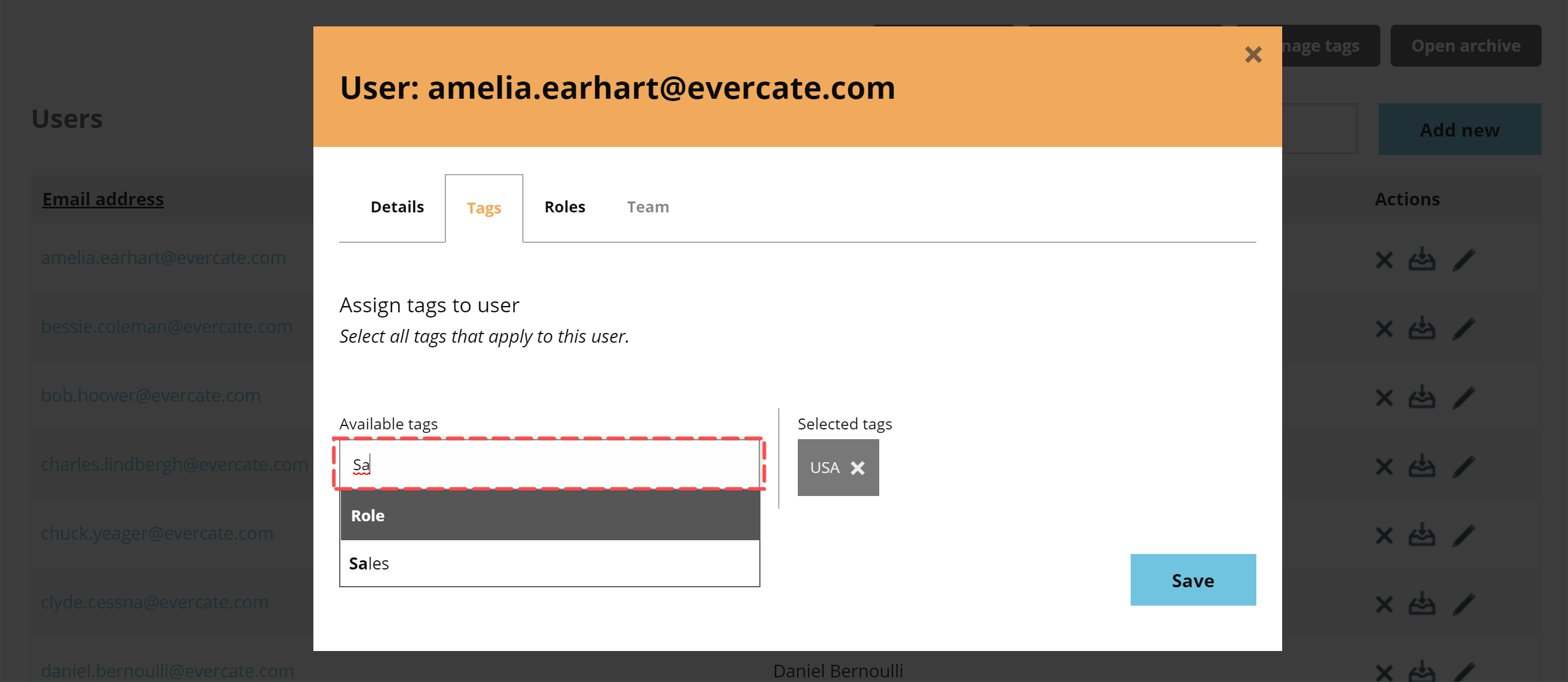
If you would have already set up course or application access rules based on tags you add or remove in the last step, you will get another popup with a summary of how the user's access to courses and applications would change, this to make sure you don't accidentally change a user's access in a way you didn't plan. But for me, I haven't set up any of these rules yet, so I'll simply return to my user list with the difference that Amelia now has tags.

Assign tags to users in bulk
The other way to work with tags is to assign them in bulk. You can do this either when you create users at the same time or when you update them. Whichever option makes more sense for you, the process is the same.
First we need an excel file or similar of the users we want to work with. I'll go ahead and update some already existing users for my example. As you can see in the picture, I have created a file in excel with one row per user. For the columns I have their email address, first name, last name, country tag and role tag. Note that I have given Valentina two role tags, separated by a comma. I have also marked all my users and copied them to my clipboard

Now let's go back to Evercate and make sure we're on the user side. We have our users in the list and a button above the list to "Manage users in bulk".
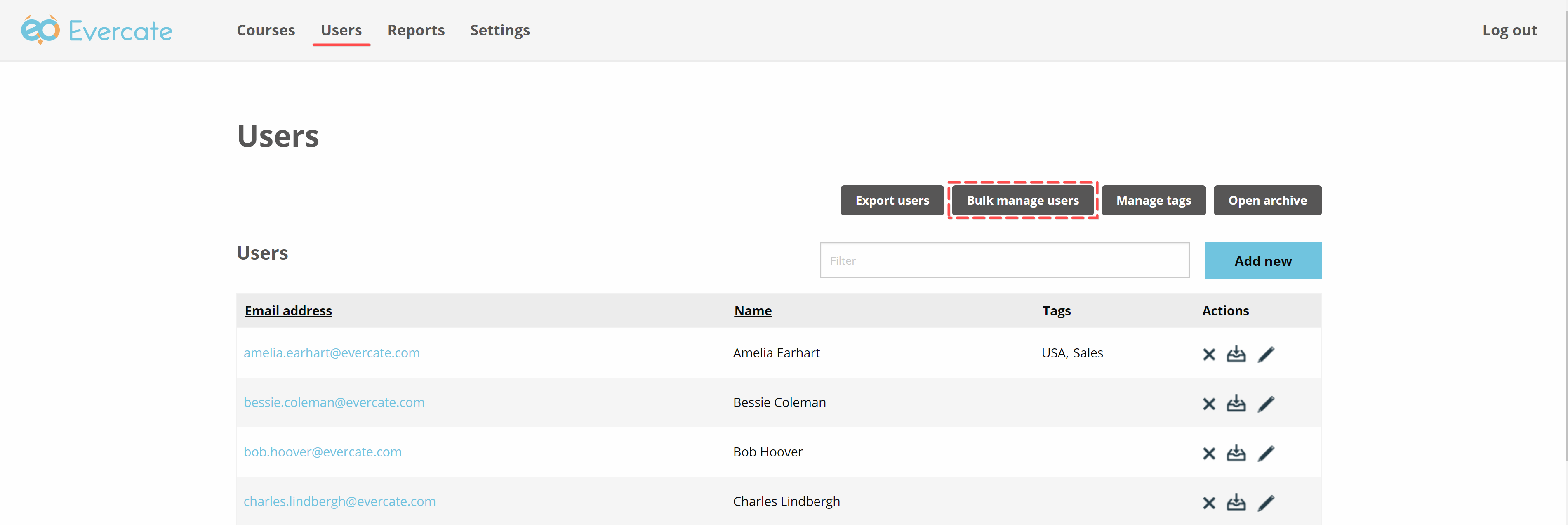
When we click on it, we open a popup that shows us our previous bulk jobs. But we want to click on the "Add/Update" tab to update our users.

Here we see a large text area where we can paste our user data that we have copied from Excel.

As soon as we paste our data, the system will sort it into matching rows and columns. If a column heading happens to be in the wrong place, for example if it says Email Address where you have First Name, you can simply drag and reorder the column headings to match your data. You will also notice two white column headings in the image below. These are for you to define the data in these columns. So we'll set the right column to Tags - Roles, as that's the tag type for the tags in that column, and the other "Select a Column" to Country to match my data. Then we click on "Next".
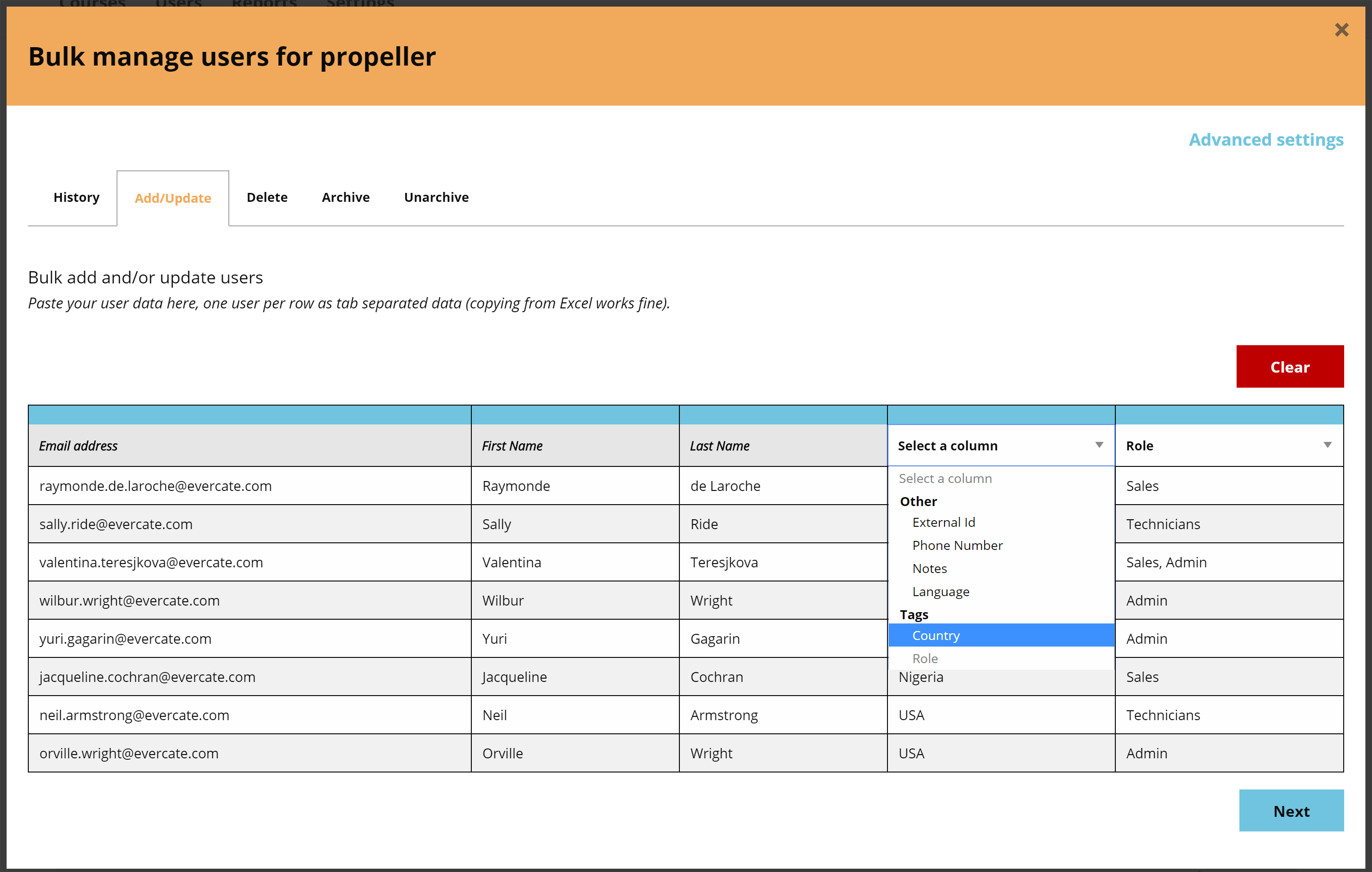
The final step now is to confirm and choose our actions. Since I only have existing users in my data from Excel I only get the option to Only update users. If there were any new users in the data I would have additional options to choose from. The main thing here is to confirm that 8 users will be updated.
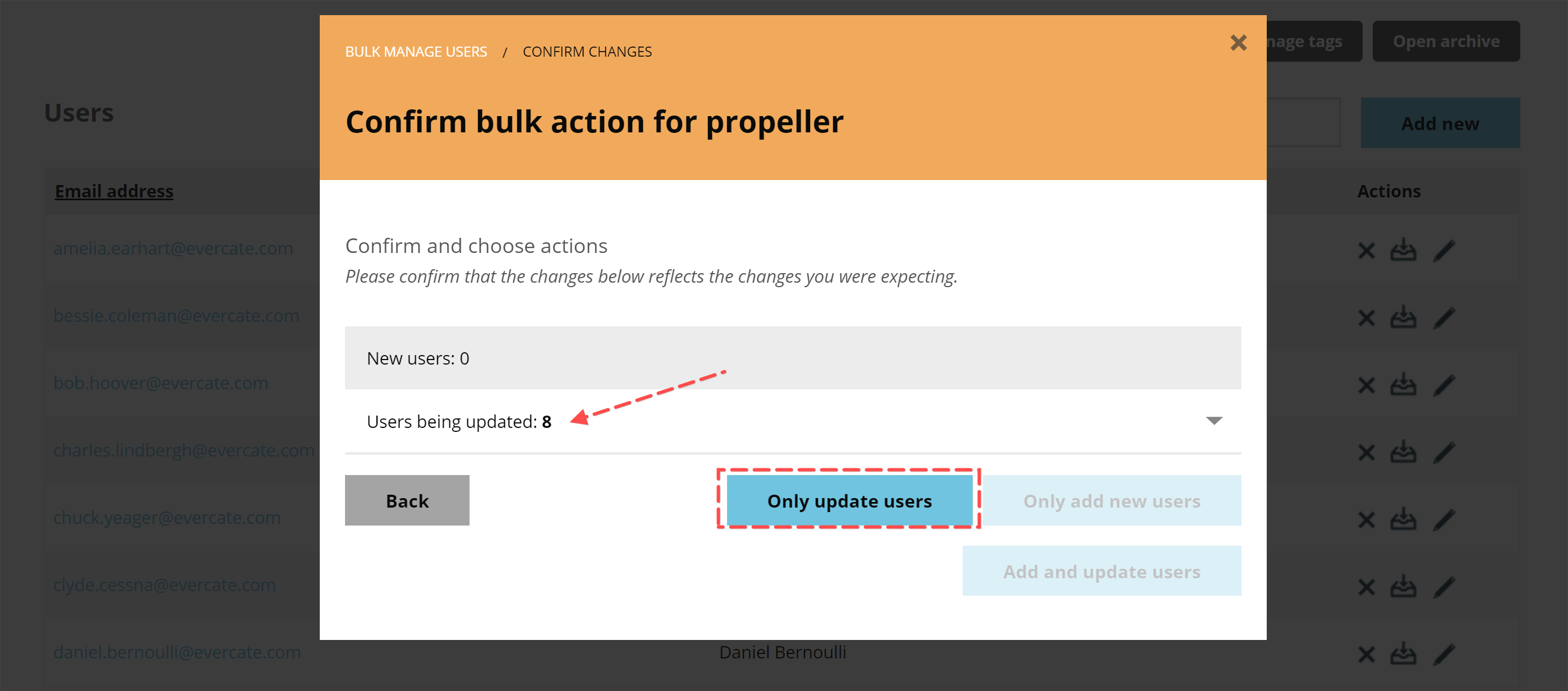
When we click on "Update users only" we will be taken back to the history page and see our new bulk job running. Once that's done, if we go back to our user list we'll see that we now have more users with tags.
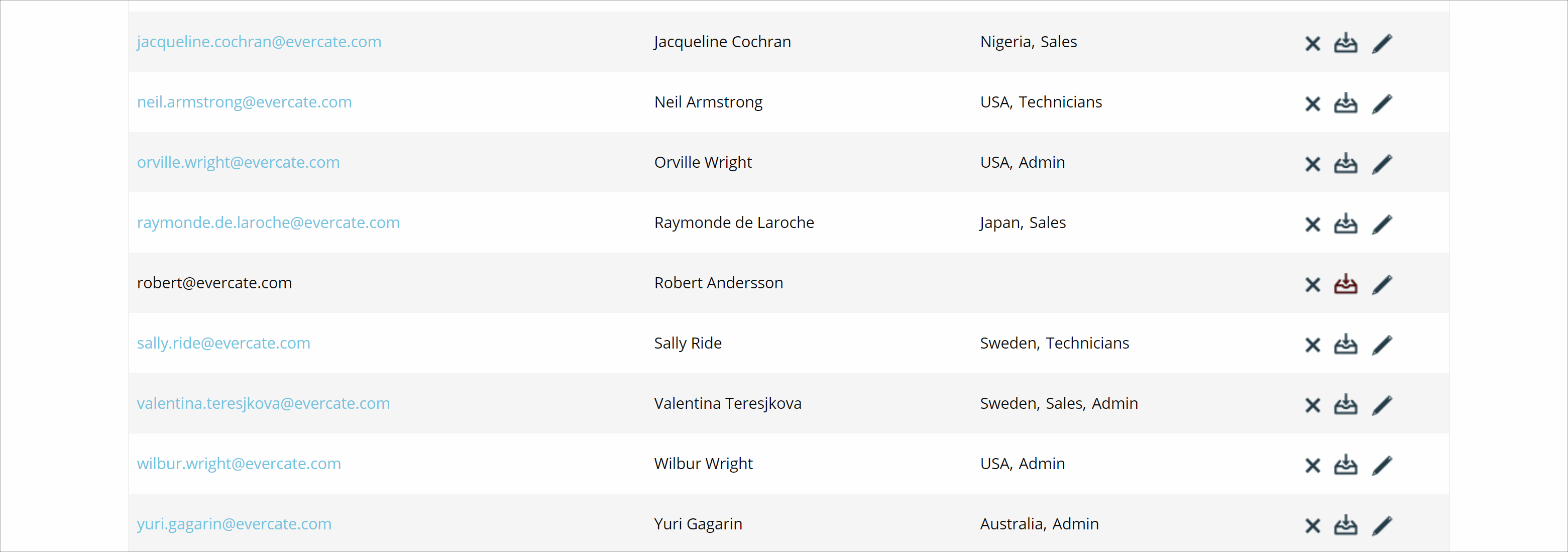
Hopefully this guide has been helpful and given you a better understanding of how to use Evercate.
Good luck setting up your tag structure, creating your tags and assigning them to your users.












